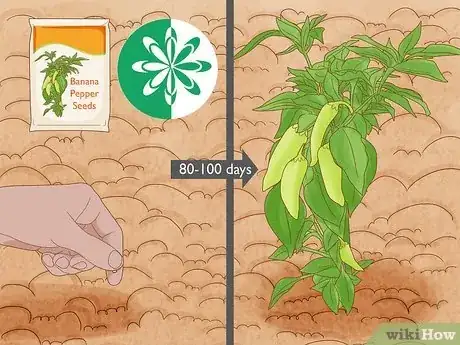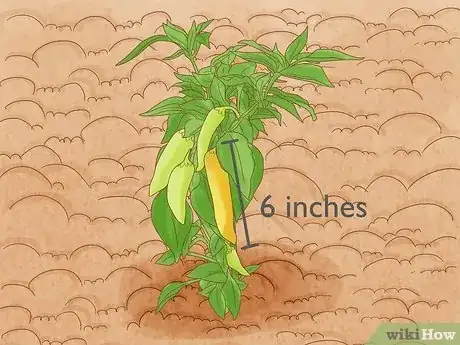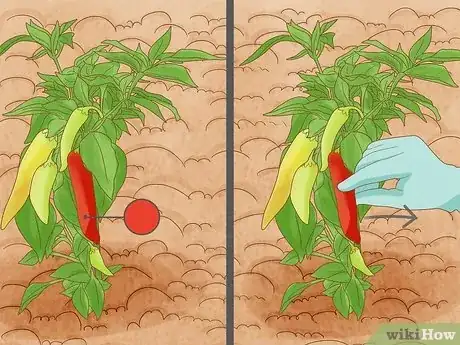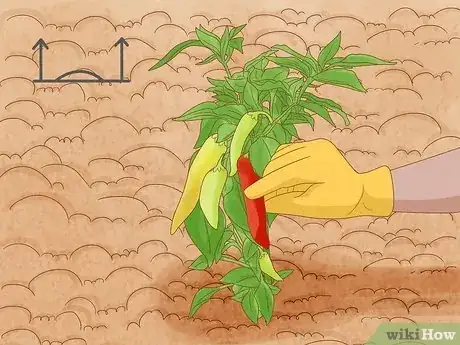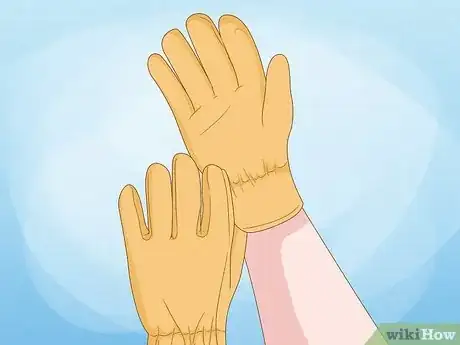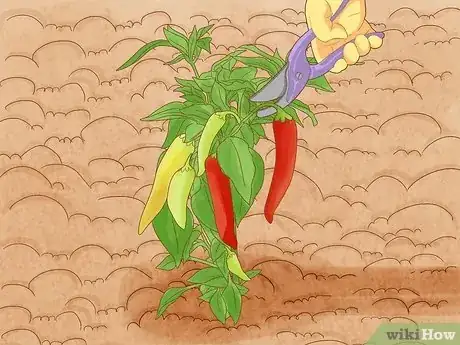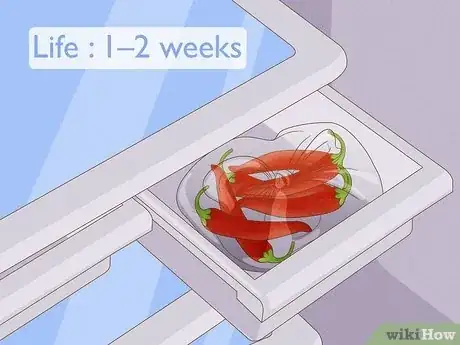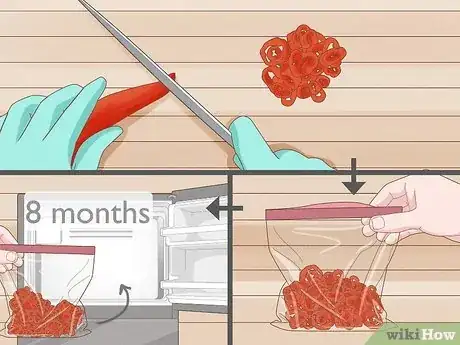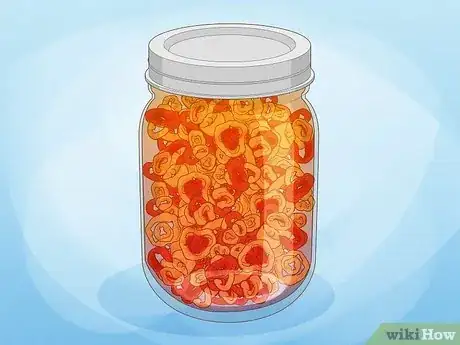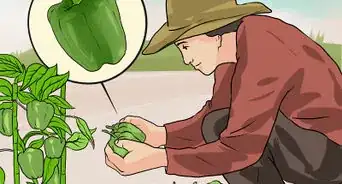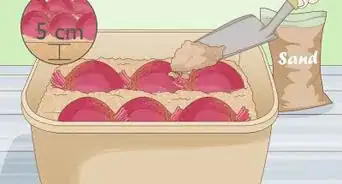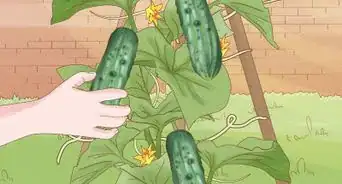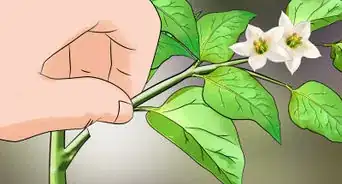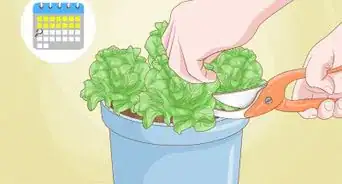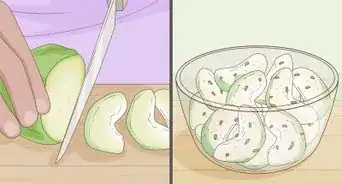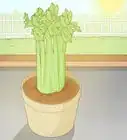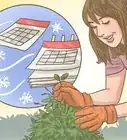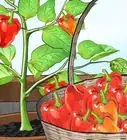This article was co-authored by wikiHow staff writer, Hunter Rising. Hunter Rising is a wikiHow Staff Writer based in Los Angeles. He has more than three years of experience writing for and working with wikiHow. Hunter holds a BFA in Entertainment Design from the University of Wisconsin - Stout and a Minor in English Writing.
There are 15 references cited in this article, which can be found at the bottom of the page.
Learn more...
Are you excited to finally enjoy the banana peppers you’ve been growing in your garden? These sweet and mild peppers are a perfect addition to any meal, and it’s pretty easy to tell when it’s time to pick them. Your banana peppers are ready as soon as they start turning yellow and are around 6 inches (15 cm) long, which is about 70 days after you planted them. Keep reading and we’ll cover the right way to pick your peppers and how to store them so they stay fresh.
Things You Should Know
- Start picking banana peppers when they turn yellow, or about 70 days after planting them.
- Pick sweet peppers when they’re yellow and hot peppers when they’re a darker orange or red for a more pronounced flavor.
- Cut the stem with pruning shears at the base of the stalk to pick your banana peppers.
Steps
Harvesting Banana Peppers
-
1Harvest your peppers in the morning. Try to get up early and pick peppers before the hot sun is out for the day. Peppers regain moisture overnight, so picking them in the morning gives you juicier and crispier fruit.[6]
-
2Put on gardening gloves before picking peppers. Capsaicin, the compound that makes peppers spicy, is present in all varieties and can cause irritation if it gets on your skin or in your eyes. Even sweet banana peppers may carry small amounts of capsaicin, so put on an extra layer of protection before your harvest.[7]
- If you touch a pepper while you’re picking it, wash your hands before using the bathroom or touching your eyes.[8]
-
3Snip the pepper’s stem with a pair of pruning shears. Since the pepper stems are brittle and break easily, cut them instead of pulling them off. Position the shears on the stem as close as you can get to the main stalk. Just hold onto the pepper as you cut the stem so it doesn’t fall to the ground.[9]
- Sanitize your pruning shears after picking the peppers off a single plant so you’re less likely to spread any bacteria or fungi.
- If you don’t have a pair of pruning shears, pinch the base of the stem between your fingers and hold the plant stalk with your other hand. Gently pull the pepper’s stem upwards to break it off the plant.
-
4Check your plants again in the next few weeks for more peppers. Picking banana peppers stimulates new growth, so the plant will still produce flowers that will turn into more fruit. Keep an eye on your pepper plant so you can pick any peppers that have ripened or grown in later in the season.[10]
Storing Banana Peppers
-
1Keep fresh peppers in your fridge for 1–2 weeks. Put the peppers in a ventilated plastic bag in the vegetable drawer in your fridge. Just before you plan on eating them, rinse them under cold running water and pat them dry with some paper towels.[11]
-
2Freeze the peppers for up to 8 months. Trim the stems off your peppers before cutting them in half and scraping out the seeds with a spoon. Slice the peppers into strips or dice them depending on how you want to use them later on. Then, put them on a cookie sheet and place them in your freezer for an hour. After that, transfer them to a freezer-safe bag.[14]
- When you want to use some of your banana peppers, just pour out as much as you need.
- Peppers keep indefinitely in the freezer, but they have the best flavor if you use them within 8 months.[15]
-
3Pickle your peppers for long-term storage. Cut your peppers into slices or strips depending on how you want to use them later. Pack the pepper slices into a clean glass jar so there’s about 1⁄2 inch (1.3 cm) of headspace. Bring 3 parts vinegar, 1 part water, pickling salt, and sugar to a boil and reduce it to a simmer. Add the liquid to the jar of peppers and put on a lid to start pickling them.[16]
- Seal the glass jars in a hot water bath to prevent bacteria from getting to your peppers.
- Let the peppers sit in the pickling liquid for about 5–6 weeks before opening them for the best flavors.
Warnings
- Wash your hands after touching hot peppers, and avoid touching your eyes or skin since it could cause irritation.[18]⧼thumbs_response⧽
References
- ↑ https://sonomamg.ucanr.edu/Vegetable_of_the_Month/Peppers_in_a_drought/
- ↑ https://www.lsuagcenter.com/~/media/system/2/a/6/c/2a6cd1c38894a182147cc78ec804ae85/pub%202132%20peppers%20rev%204-17pdf.pdf
- ↑ https://thehomegarden.com/guide/bananapeppers/
- ↑ https://www.uky.edu/ccd/sites/www.uky.edu.ccd/files/hotpeppers.pdf
- ↑ https://aggie-horticulture.tamu.edu/archives/parsons/vegetables/pepper.html
- ↑ https://hgic.clemson.edu/factsheet/harvesting-vegetables/
- ↑ https://extension.uga.edu/publications/detail.html?number=C1005
- ↑ https://extension.umn.edu/vegetables/growing-peppers#harvest-and-storage-171362
- ↑ https://youtu.be/fQFspllk8rs?t=290
- ↑ https://extension.umn.edu/vegetables/growing-peppers#harvest-and-storage-171362
- ↑ https://mtvernon.wsu.edu/path_team/Growing%20peppers%20in%20home%20garden%20-%20Bush%20et%20al%202016%20FS220E.pdf
- ↑ https://www.allrecipes.com/article/what-are-banana-peppers/
- ↑ https://lenoir.ces.ncsu.edu/2021/08/banana-peppers/
- ↑ https://lenoir.ces.ncsu.edu/2021/08/banana-peppers/
- ↑ https://food.unl.edu/article/freezing-peppers
- ↑ https://extension.colostate.edu/topic-areas/nutrition-food-safety-health/making-pickled-peppers-at-home-9-314/
- ↑ https://hgic.clemson.edu/factsheet/pepper/
- ↑ https://extension.umn.edu/vegetables/growing-peppers#harvest-and-storage-171362
